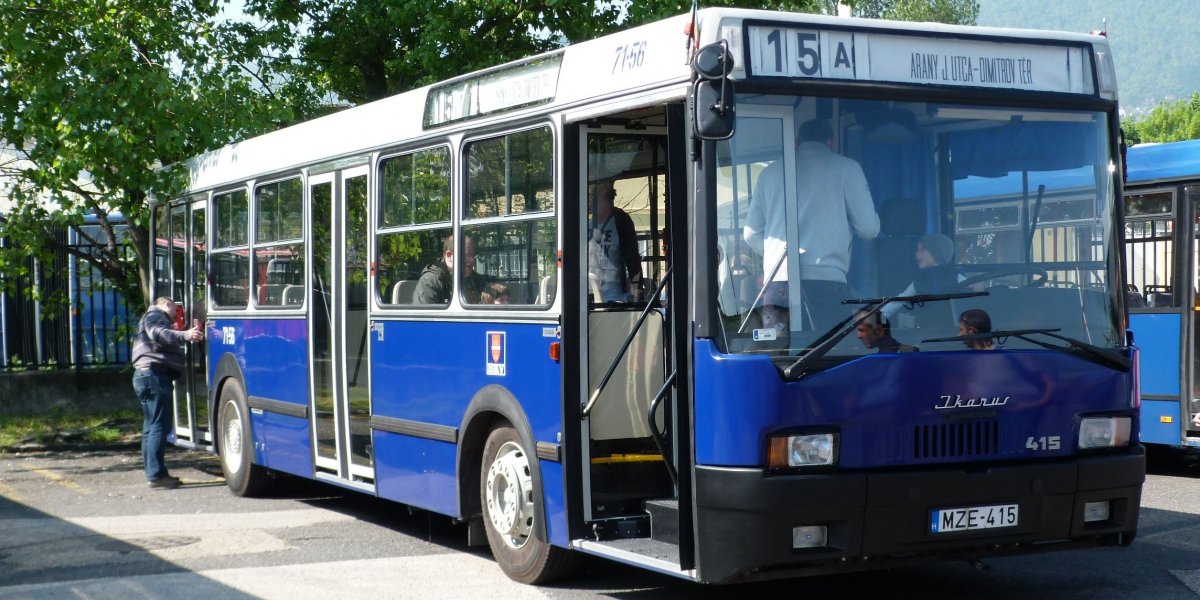The quality of bus transportation in Budapest leapt forward in the 1960s PestBuda has previously reported on the excitement that a new family of buses could cause, such as the Ikarus 66 or the first bendy (articulated) buses. The latter was a real success story, but as reported, the Ikarus 66 – the urban equivalent of the successful Ikarus 55 long-distance bus – underperformed in Budapest.
The first high-capacity, reliable Ikarus buses in Budapest were the Ikarus 556s which entered service in 1964, and the articulated 180s which operated from 1966. The latter type was a DIY solution, created in the Budapest Bus Workshop from scrapped solo buses.

The Ikarus 66 underperformed in Budapest (Photo: Fortepan/No.: 18143)
Fewer than 10 years passed and the well-known 200-family of buses appeared on the roads. The solo and articulated box-like Ikarus buses were milestones in Hungarian and global bus production. Three-quarters of all buses manufactured in the world in the 1970s and 1980s were from the articulated Ikarus 280 family. The large-windowed vehicles became defining elements of not only Budapest but cities around the world.
It is little wonder that by the end of the 1970s and the beginning of the 1980s, the Ikarus 260 solo and 280 articulated buses displaced all other busses from Budapest's roads.
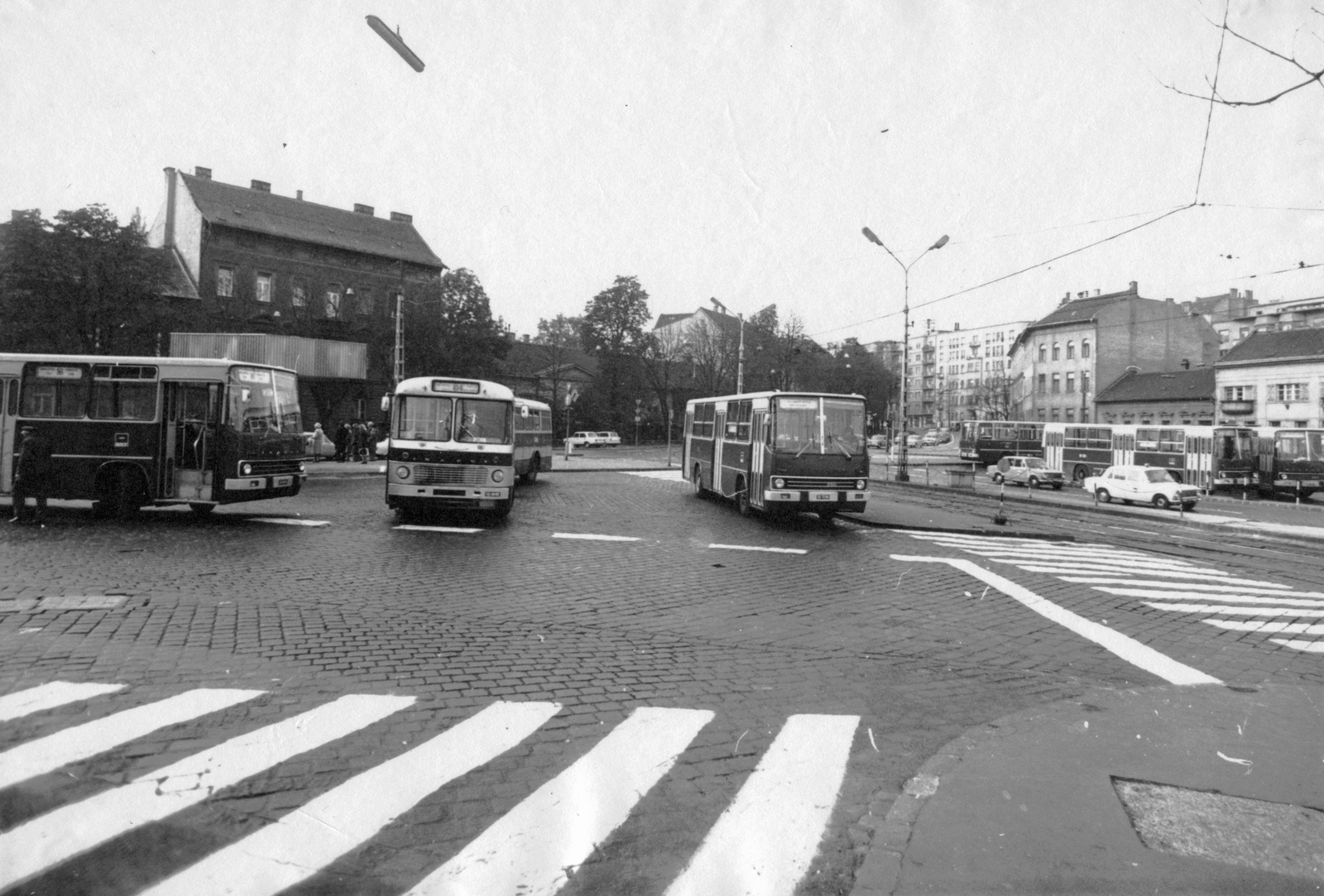
The transition: Ikarus 180 (right) and Ikarus 260 on present-day Szél Kálmán Square in 1978 (Photo: Fortepan/No.: 38919)
The Ikarus 400 family was forced to compete with the success of the Ikarus 200 family. Development of the new models began shortly after the 200 series entered production.
The new vehicles were introduced to the public at the Budapest International Fair, BNV, in 1982. However, the prototypes appeared on streets in the countryside, not in Budapest. The model was first used in Budapest in 1985 as a test run. On 14 June 1985 Esti hírlap wrote:
“What are the most noticeable changes compared to the 200 series?
The floor is 18 centimetres lower, – the BKV traffic safety department has noted. – Commuters will also notice that the double seats have been placed on the left side of the bus, while they were n the right side in its predecessors. This makes moving in the passenger area and towards the doors safer and smoother. The inner gliding doors also serve this purpose.
Passengers can also open the doors from the outside, of course only when the bus is stationary. If a passenger presses the stop button, only the closest door to them will open, so the door opening and the stop signal system has been modified. ”
The bus also had a larger capacity than its predecessor, 104 people could travel in one solo vehicle. However, BKV experts were not so impressed with the first trial on 4 June 1986, Népszava wrote:
The new Ikarus 415 is being trialled by BKV. Many have travelled on the vehicle already. It is used on line 30 during the week and on line 16 on weekends.
"Has been used," corrects István Jeszenszky, the group leader of BKV's central technical engineering staff. "It is currently under repair. Unfortunately, it is spending more time in the garage then on the street."
What will you do now?
"This bus is owned by Ikarus, we are only trialling it. We will receive 10 new buses later this year, but with different engines. The old engines will be installed rather than these newer ones. The transmission is also unreliable and we have requested that it be replaced."
These lackluster experiences make the decision to by surprising.
"We have two reasons. One the one hand we want to support Ikarus in its development work, and on the other, we want to be ahead of the future generation change. Although it is only expected in the 1990s, we want to be prepared.”
After the tests, BKV bought 30 415 buses in 1987–1988. The 415 became the first new bus model in Budapest in over 15 years. However, these 30 new vehicles were just a drop in the sea of old buses, as a total of 1,889 buses were used in Budapest during 1889 (of which 813 were articulated).
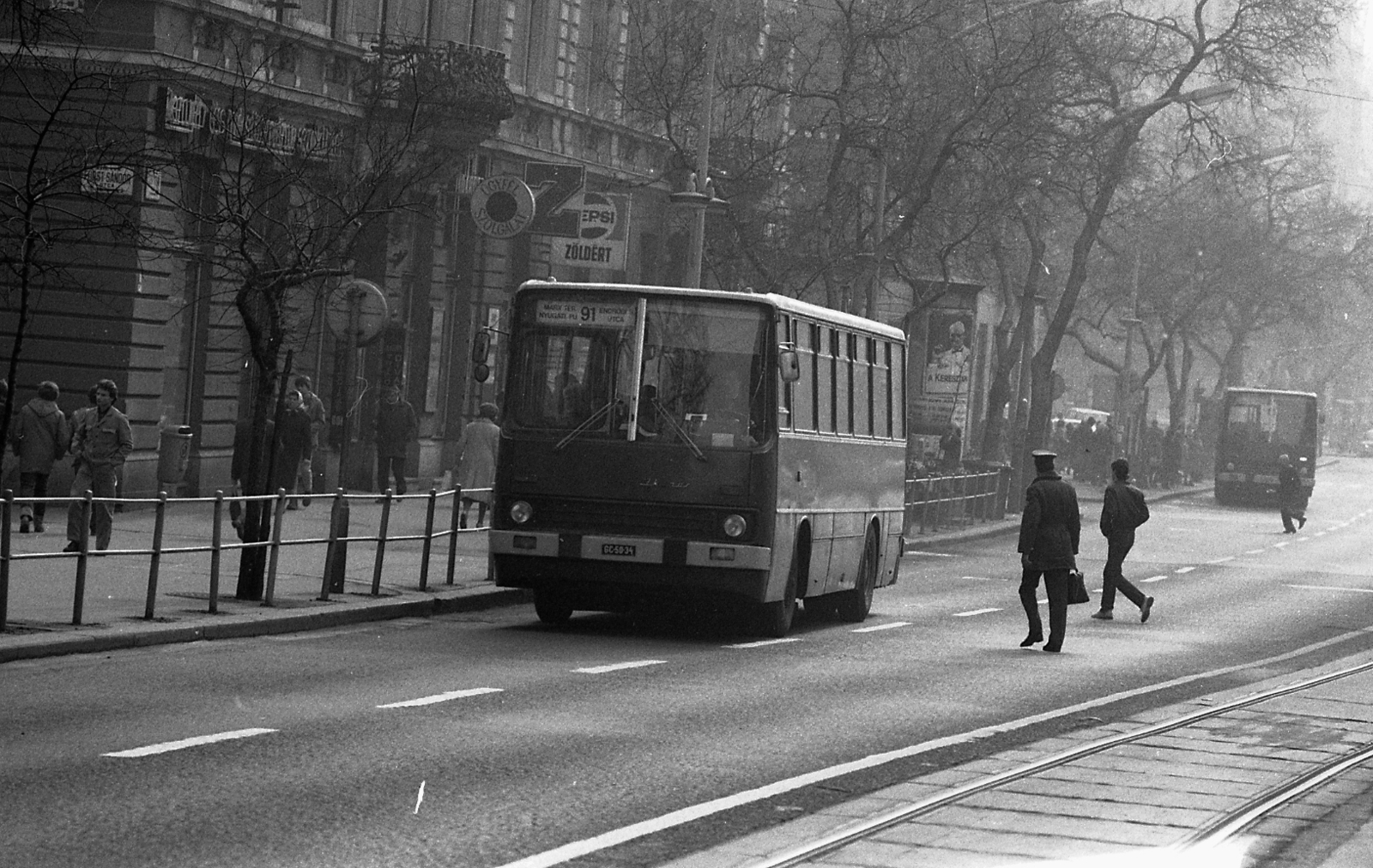
A typical street in the 1980s: Ikarus 260 buses (Photo: Fortepan/No.: 66741)
As mentioned, the Ikarus 415 was lower than the 200 series, meaning passengers did not have to climb as high. However, it was still not a low-floor bus. The interior was also different, and the seats more comfortable. Moving the stop signal and door opening buttons to the side were a major change, as was the fact that passengers could open the doors from outside.
No new busses followed the first 30 for a while. BKV had so many problems with the new type that it ordered more of the old, Ikarus 260s instead.
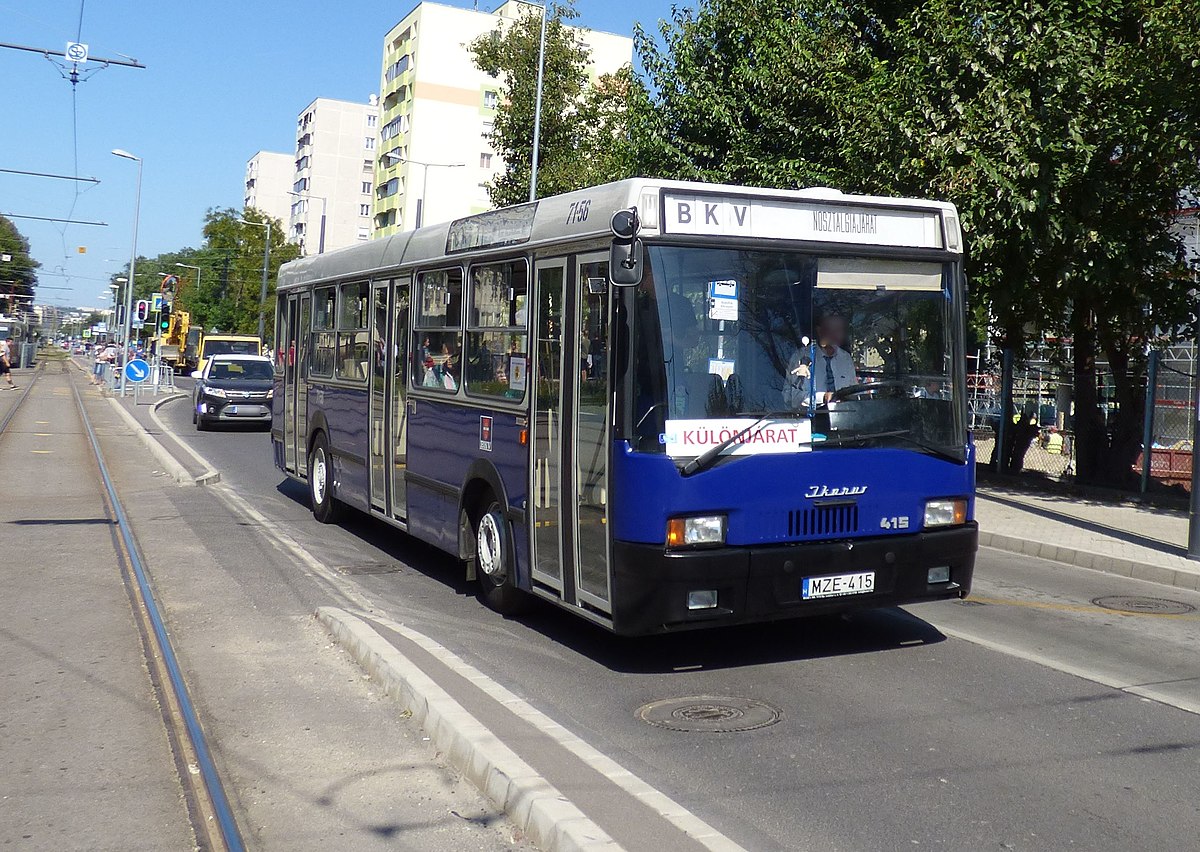
An Ikarus 415 from the first production series (Photo: Wikipedia, Kemenymate)
The next batch, with 120 vehicles, entered service in 1992. These were more modern. Their engines were more efficient, and new FOK-GYEM displays were installed. This meant that instead of only displaying static signs, the bus could display the name of the next stop.
The second series differed from the first slightly. The difference was most noticeable on the front, as the factory returned to the split two-part windshield. The front lights of the bus were also redesigned. The first 30 buses received “Lada lights”, i.e. their headlights were the same as those of the Lada 2105. This is unsurprising as these parts were manufactured in Hungary for the Russian car as well.
The route indicator was also changed. On the first 30 busses, routes were painted on a rolled-up canvas. This was turned to the appropriate position. The newer models were equipped with FOK-GYEM displays. However, the boards made a return later. Inside, the lights were relocated, and the back door was smaller.
The engine and transmission were also replaced as were many other technical solutions. Over time, these parts were also replaced with newer ones in the first 30 buses.
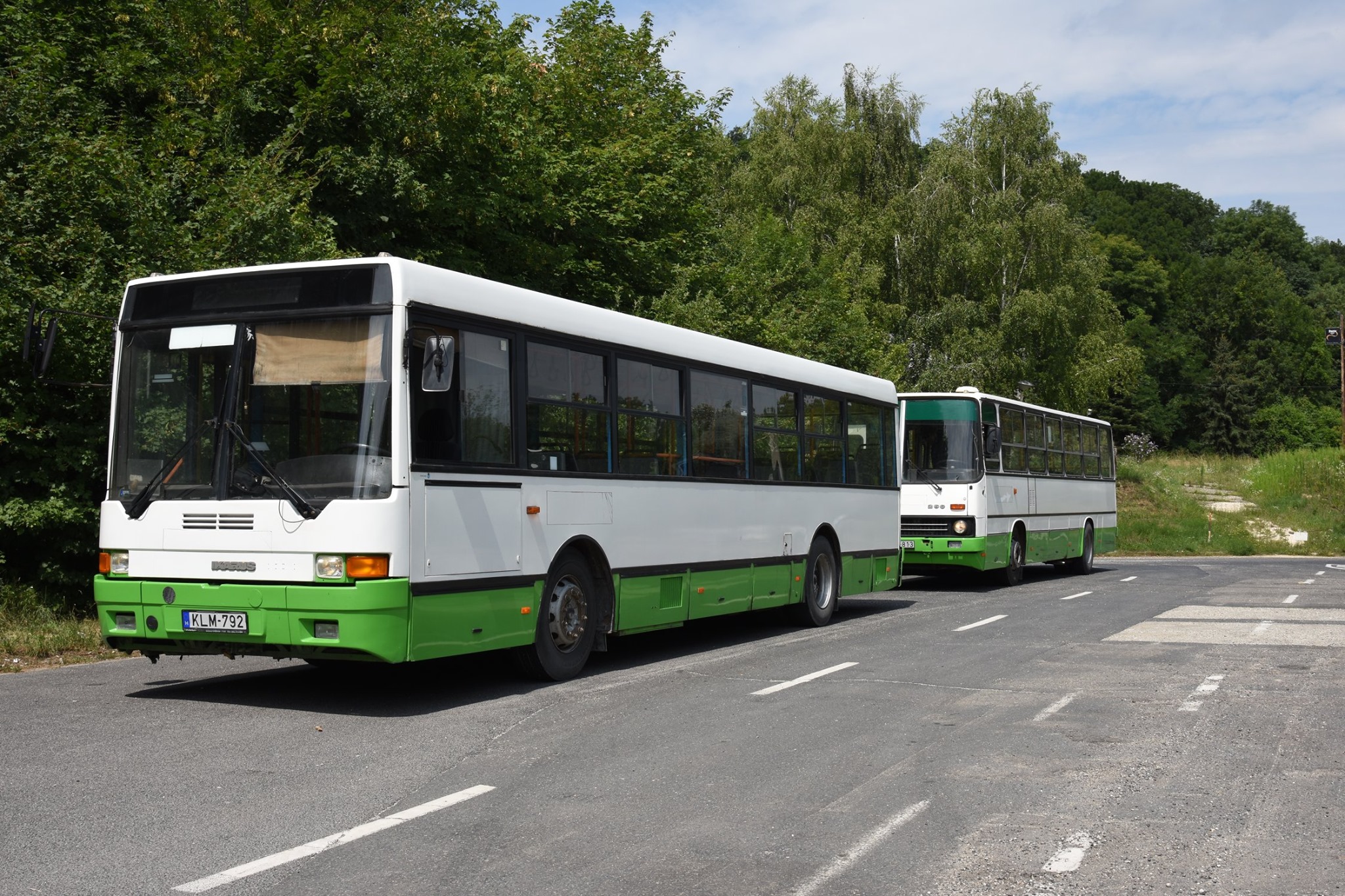
Ikarus 415 and 260 buses in the Transport Museum (Photo: mmkm.hu)
The 400-family likely failed to become popular because of the growing prevalence of low-floor buses in Europe through the 1990s. Such models entered the Ikarus fleet in 1996. Furthermore, since the turn of the millennium, Budapest has purchased other types of Buses, not only those made by Ikarus.
However, the 415s continued to run in the city until 29 January 2021, when the last working bus was retired.
Cover photo: A Ikarus 415 outfitted for nostalgia rides (Photo: Wikipedia, Kemenymate)

